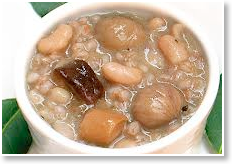
Italian food is famous world-wide and is very appreciated by people traveling to Italy. Typical Umbrian dishes have very ancient origins that date from the time of Etruscans, Romans and Germans. The “
farro” wheat has been used from the ancient Umbrians being cultivated on the hills of the Apennine mountains. It is still used as ingredient in many soups.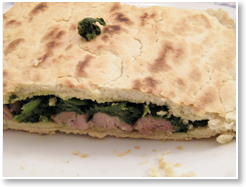
Another dish is the “
torta al testo” (testo cake) which is the derivation of the roman’s soldiers bread. Roman soldiers in fact were supplied with grain or flour and they had to prepare their own bread. They were equipped with a round thick dish made of terracotta, named in latin “testum”, to cook their own bread. The technique to prepare the “torta al testo” is still almost the same and it consists in preparing a dough with flour, water, salt and yeast, and to cook it on the “testo” heated on wood charcoal. It is an ancient fast food and it is still very appreciated! The “torta al testo” is generally stuffed with many different kinds of ingredients like sausages, boiled vegetables, prosciutto, salami and many cold cuts.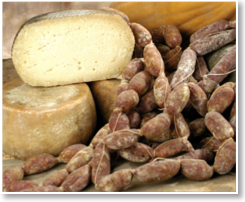
Umbria, in fact, is also famous for the “
norcineria” which defines the art of treating the salted pork meat for salami and “prosciutto” (ham) production. It is interesting to note that the name “norcineria” came from the name of the Norcia town that is located in the south east of Umbria, close to the Apennine mountain, where, since the roman times the preparation of the Norcia salamy and ham was famous. It funny to note that the butchers that prepared the pork meat for the conservation was also the ancient surgeons during the roman time because of their expertise in the anatomy of animals (including man).Norcia is also the town where San Benedetto, the founder of “benedettini” friars order, was born.
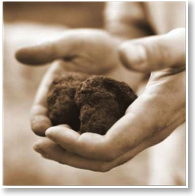
A very important production of the Norcia area is the “
tartufo nero” (black truffle), who is named the king of the cuisine. It is a sort of underground mushroom with a particular and very appreciated scent and taste. Its strong scent is the signal it emits in order to be found by wild animals, and only animals can find it. It is a real treasure and its harvesting and commercialization was regulated since the middle age. It is used in many dishes like “strangozzi”, “norcine”, “frittata” and so on and is a really precious ingredient.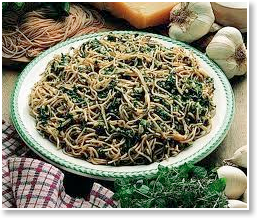
A middle age cake is the “
rocciata” or attorta. It is a strudel typical of Foligno and its recipe came from the Germans in the middle age at the time of Federico II di Svevia. Frederich was born in Jesi and it was educated in Assisi, so the court took their german recipes and the german strudel is still now in the rocciata cake.

